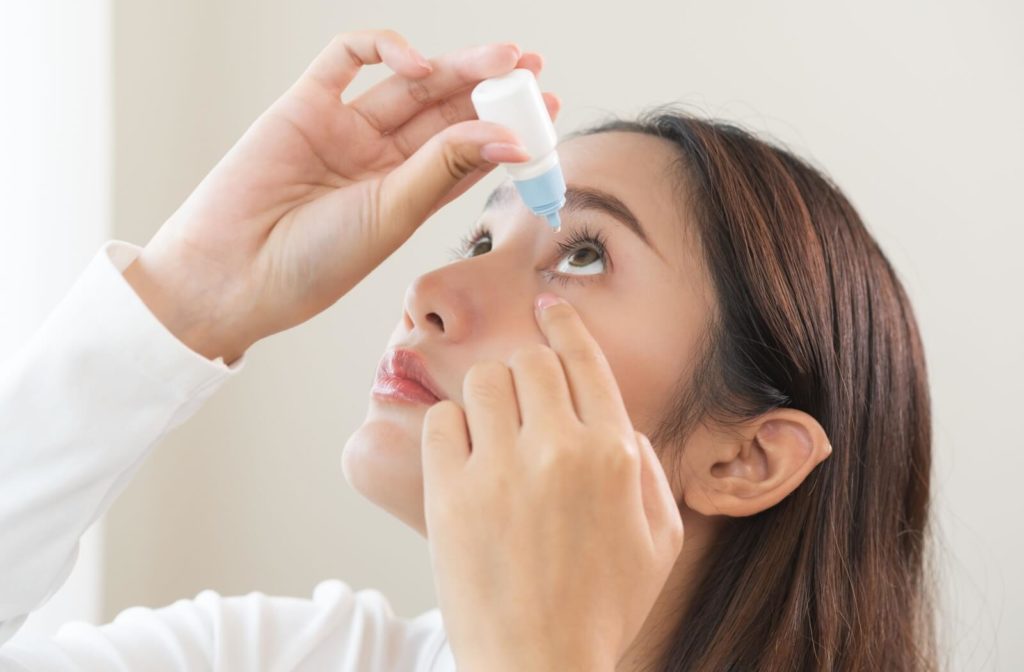Meibomian Gland Dysfunction (MGD) involves having blocked or faulty oil glands in your eyelids. This makes it harder for your eyes to stay properly lubricated, resulting in an increased risk of dry eye.
For those grappling with this common yet often misunderstood condition, the questions can seem endless—most notably, whether MGD can be cured.
While there’s no cure for this MGD, it can be effectively managed with the right treatment plan. The keys to managing this condition include:
- Reducing symptoms
- Improving comfort
- Keeping it from progressing
If your eyes are feeling dry and irritated, knowing how to handle MGD can bring much-needed relief.
What Is Meibomian Gland Dysfunction?
The meibomian glands are small, oil-producing glands located in our eyelids. They play a crucial role in maintaining the health of our eyes.
The meibomian glands produce the oil layer of the tear film, which helps prevent evaporation of tears. When these glands malfunction, this can lead to Meibomian Gland Dysfunction, disrupting the comfort and clarity of vision.
MGD affects a wide range of people, and often leads to chronic dry eye disease if left unmanaged. Unfortunately, many are unaware of the condition until symptoms become severe enough to impact their daily life.
It’s estimated that 86% of patients with dry eye symptoms have signs of MGD, making it a significant reason for eye discomfort.
Symptoms of Meibomian Gland Dysfunction
Identifying MGD isn’t always straightforward, as its symptoms often overlap with other eye conditions. However, there are specific signs to watch out for. Common symptoms include:
- Dryness
- Itching
- A gritty sensation in the eye
- Blurred vision
- Sensitivity to light
These symptoms can vary in severity and may fluctuate over time. In some cases, people might experience red, inflamed eyelids or notice crusts forming around their lashes.
These are telltale signs that the oil glands aren’t functioning correctly. While the symptoms themselves can be mild, they may lead to more serious complications if ignored, highlighting the importance of early detection and intervention.
Causes of Meibomian Gland Dysfunction
Various factors contribute to the dysfunction of these vital glands:
- Aging
- Hormonal changes
- Environmental factors
- Prolonged exposure to screen time
- Air conditioning or windy conditions
- Poor diet
- Inadequate eyelid hygiene
There is also a genetic component to consider. Some individuals are predisposed to develop MGD due to inherited conditions that affect gland function.
Is There a Cure for Meibomian Gland Dysfunction?
While a permanent cure may not yet be available, MGD can be effectively managed with proper treatment and lifestyle adjustments. The goal is to restore gland function as much as possible and alleviate symptoms.
Treatment Options for Meibomian Gland Dysfunction
There are several treatment options available that can significantly improve the symptoms of MGD:
- Lumecca IPL (Intense Pulsed Light) therapy has shown promise in reducing inflammation and encouraging healthy gland function. By targeting the blood vessels that contribute to inflammation, IPL can help restore balance to the eyelids.
- RF (Radiofrequency) Therapy, which includes devices like Forma and Forma-I. These devices use heat to stimulate the meibomian glands, encouraging them to produce the oils necessary for good tears. It’s a non-invasive treatment that can yield impressive results over several sessions.
- BlephEx is another effective treatment that involves the mechanical removal of debris and bacteria from the eyelid margins. This procedure cleans the eyelid area, helping reduce inflammation and improve overall gland function. It’s usually performed in an eye care professional’s office and can lead to immediate relief.
Managing Symptoms for Long-Term Relief
Ongoing management of MGD symptoms is crucial for maintaining eye comfort.
- Regular use of heating masks can help keep the oil glands open and functioning. These masks apply gentle heat to the eyelids, aiding in the liquefaction and release of oils.
- Another innovative treatment is ZEST (Zocular Eyelid System Treatment), which is a natural-based treatment aimed at cleansing the eyelids and improving gland health. It offers the twin benefits of both cleaning and stimulating the meibomian glands, making it a comprehensive option for those with MGD.
Maintaining a healthy lifestyle is also key in managing MGD symptoms.
- A diet rich in omega-3 fatty acids can promote better gland function.
- Regular breaks from screens can minimize eye strain.
- Consistent eyelid hygiene is another preventative measure that can aid in long-term relief.
MGD Management at Southwood Eyecare
If symptoms persist despite at-home management, it’s important to consult with an eye care professional. They can provide a thorough examination and recommend specialized treatments tailored to individual needs.
Early intervention is key to preventing more severe complications. Regular check-ups are important for those diagnosed with MGD. Your eye doctor can monitor your progress and make necessary adjustments to treatment plans.
They can also provide valuable insights into the latest advancements in MGD treatments.
Ultimately, professional guidance ensures that people receive the most effective care for their specific condition. By addressing concerns early, patients can enjoy clearer vision and improved eye health for years to come.For more guidance on managing MGD, book an appointment with Southwood Eyecare to discuss personalized treatment plans.




